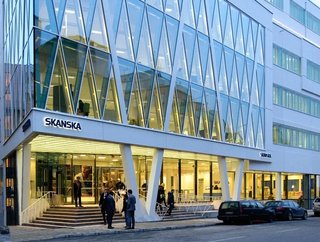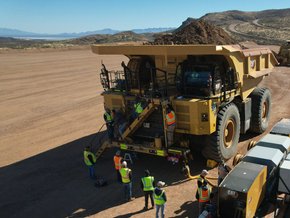Skanska Remains on Target for Sustainability Goals

Skanska, one of the world's leading project development and construction groups, has released its results for the first quarter of 2024, and reports a mixed market performance, but with “signs of a potential recovery in the market”, the company says.
The “Q1 performance was characterised by strong order intake and lower results in the Construction business stream,” says Group President and CEO, Anders Danielsson.
He adds: “But we saw positive momentum in the number of sold homes, and leasing was boosted by signing the largest lease in our history.”
In terms of the company’s performance on sustainability, it has achieved carbon reduction 58% since its baseline year of 2015. This mirrors the figures the company released for Q3 2023.
Skanska’s sustainability targets for its UK operations are typical of what the company is looking to achieve across its global operations.
In the UK, it is targeting net zero emissions across all activities by 2045, including across its entire supply chain.
Skanska looking to cut GHG emissions by 50%
Skanska UK is also targeting a 50% reduction in emissions against all GHG scopes (1, 2 and 3) by 2030. It is also aiming for a 70% reduction in Scopes 1 and 2 emissions by 2030 from a 2015 baseline.
- SCOPE 1: Covers emissions from sources an organisation owns or controls directly, such as burning fuel in its fleet of vehicles (if they’re not electrically-powered).
- SCOPE 2: These are emissions a company causes indirectly, and come from where the energy it purchases and uses is produced. (Lighting in a company’s building, for example.)
- SCOPE 3: The are emissions not produced by the company itself but by those up and down its supply chain. Scope 3 can account for up to 80% of a company’s total emissions
Skanska is also looking at how it can optimise energy efficiency and the use of low-carbon materials. This includes ongoing dialogue with stakeholders across its value chain,”to drive the market transformation required to decarbonise the built environment”, the company says.
It adds: “We also see the need for internationally shared carbon performance standards that allow the comparison of solutions, and to drive innovation and development that will accelerate the climate transition.”
Its CEO is on record as saying Skanska’s leading position in the development and construction industry “gives us an opportunity, and a responsibility, to act”.
He adds: “The built environment accounts for nearly 40% of the world’s energy-related carbon emissions,” he says. “Few other sectors can have a greater impact on reducing emissions.
“Our efforts to reduce emissions extend across our entire operation and drive much of the innovation we see all around the company, as well as presenting a great business opportunity.”






